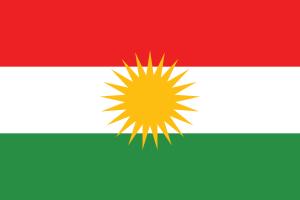Difference between revisions of "Language/Northern-kurdish/Grammar/Dative-Case"
m (Quick edit) |
m (Quick edit) |
||
| Line 90: | Line 90: | ||
[[Category:0-to-A1-Course]] | [[Category:0-to-A1-Course]] | ||
[[Category:Northern-kurdish-0-to-A1-Course]] | [[Category:Northern-kurdish-0-to-A1-Course]] | ||
==Related Lessons== | |||
* [[Language/Northern-kurdish/Grammar/Subordinating-Conjunctions|Subordinating Conjunctions]] | |||
* [[Language/Northern-kurdish/Grammar/Place-Adverbs|Place Adverbs]] | |||
* [[Language/Northern-kurdish/Grammar/Future-Tense|Future Tense]] | |||
* [[Language/Northern-kurdish/Grammar/Give-your-Opinion|Give your Opinion]] | |||
* [[Language/Northern-kurdish/Grammar/How-to-Use-Have|How to Use Have]] | |||
* [[Language/Northern-kurdish/Grammar/Personal-Pronouns|Personal Pronouns]] | |||
* [[Language/Northern-kurdish/Grammar/Conditional-Mood|Conditional Mood]] | |||
* [[Language/Northern-kurdish/Grammar/Manner-Adverbs|Manner Adverbs]] | |||
* [[Language/Northern-kurdish/Grammar/Interrogative-Pronouns|Interrogative Pronouns]] | |||
* [[Language/Northern-kurdish/Grammar/Questions|Questions]] | |||
{{Northern-kurdish-Page-Bottom}} | {{Northern-kurdish-Page-Bottom}} | ||
Revision as of 21:55, 14 March 2023
As a Northern Kurdish language teacher with 20 years of experience, I am excited to help you explore the dative case in Northern Kurdish noun and adjective declension as part of the "Complete 0 to A1 Northern Kurdish Course". In this lesson, we will focus on the function and meaning of the dative case, its various forms and rules of declension for Northern Kurdish nouns and adjectives.
Understanding the Dative Case
The dative case is used to indicate the indirect object of the verb, the object to or for whom the action of the verb is being done. It can also be used to express the goal of an action or the recipient of an object. In Northern Kurdish, the dative case is formed by adding specific suffixes to nouns and adjectives. These suffixes change based on the gender of the noun or adjective and the vowel harmony of the preceding syllable. Let's look at some examples:
| Northern Kurdish | Pronunciation | English |
|---|---|---|
| îro | [iːro] | today |
| êvar | [eːvar] | evening |
| havîn | [havɪn] | summer |
| bajar | [bʌdʒʌr] | city |
To form the dative case of these Northern Kurdish nouns, we add the appropriate suffixes based on their gender and vowel harmony. For masculine nouns with a stressed final syllable ending in a consonant, we add "-ka" (-که) to the end. For feminine nouns with a stressed final syllable ending in a consonant, we add "-ke" (-کە) instead. If the final syllable ends in a vowel, we add "-yê" (-یە) for both masculine and feminine nouns. Let's see the dative case forms of our examples:
| Northern Kurdish | Pronunciation | English |
|---|---|---|
| îroka | [iːroka] | to/for today |
| êvarke | [eːvarke] | to/for evening |
| havyê | [havjɛ:] | to/for summer |
| bajaryê | [bʌdʒarjɛ:] | to/for city |
For adjectives, we add "-e" (-ە) to the end of the stem regardless of gender and vowel harmony. Let's see an example:
| Northern Kurdish | Pronunciation | English |
|---|---|---|
| xweş | [xweʃ] | sweet/pleasant |
To form the dative case of this Northern Kurdish adjective, we add "-e" (-ە):
| Northern Kurdish | Pronunciation | English |
|---|---|---|
| xweşe | [xweʃe] | to/for sweet/pleasant |
Usage of the Dative Case
The dative case in Northern Kurdish is used in a variety of situations where the indirect object of the verb or the recipient of an object needs to be specified. It is also used to indicate the goal or destination of an action. Here are some examples:
- Nouns and pronouns as indirect objects of a verb:
- Ez li ser bajarê te xwendinê bûm. -> I studied in your city. - Tu min jî bo xwe amade bike. -> You also prepare me for yourself.
- Expressing the recipient of an object:
- Min bextiyariya te dixwazim. -> I wish the happiness for you. - Tu çawa te bikar bînin hespê xwe? -> How do you use your horse?
- Expressing the goal of an action:
- Ji bo ku kêfa xwe bide min, xweşikê çêdikir. -> To please me, she made something sweet. - Ji bo şêwaza keviran, min jîvala tereşînî li wan avênas. -> To water the trees, I carry a bucket of water to them.
Recap
In this lesson, we have explored the dative case in Northern Kurdish noun and adjective declension. We have looked at the rules of declension for nouns and adjectives and how suffixes are added based on gender and vowel harmony. We have also seen some examples of how the dative case is used in Northern Kurdish to express indirect objects, recipients, and goals. Practice using the dative case of Northern Kurdish nouns and adjectives to enrich your language skills, and be sure to check out the other lessons in the "Complete 0 to A1 Northern Kurdish Course".
